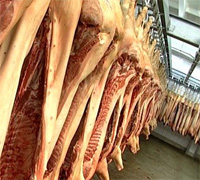USMEF: Implementation date announced for the Korea-US FTA

Joe Schuele, United States Meat Export Federation (USMEF) communications director, said recently that 15 March will be the implementation date for the Korea-US Free Trade Agreement. Here is how this will affect market access for US pork and beef…
Erin Borror further added that with beef, imports into Korea are currently paying a 40 percent duty. Essentially that duty is reduced over the next 15 years, so immediately when the FTA is implemented in March that duty drops to 37.3 percent. We basically see a reduction of 2.7 percent each year and duty-free zero by 2026. So you can imagine we’ll see quite the benefit, especially when duties drop to around 15 percent and below by about 2020. The U.S. also has a competitive advantage through the free trade agreement because Australia and New Zealand, who are the other major suppliers to Korea, do not currently have free trade agreements. And Canada has always been a relatively small supplier, even prior to the BSE ban. But as they come slowly back into that market, they will also face the full 40 percent duty.
Pork is an even more dramatic reduction. Duties in themore commonly traded items, which are frozen pork muscle cuts, are currently 25 percent, and upon implementation will be reduced to 16 percent and completely eliminated by 2016. So by next year we’ll see duties of 12 percent, then 8 percent, then 4 percent, and then zero. So, a very fast reduction on the pork side. Chile will be essentially duty-free on all products by 2014, so we will be on a completely level playing field by 2016.











